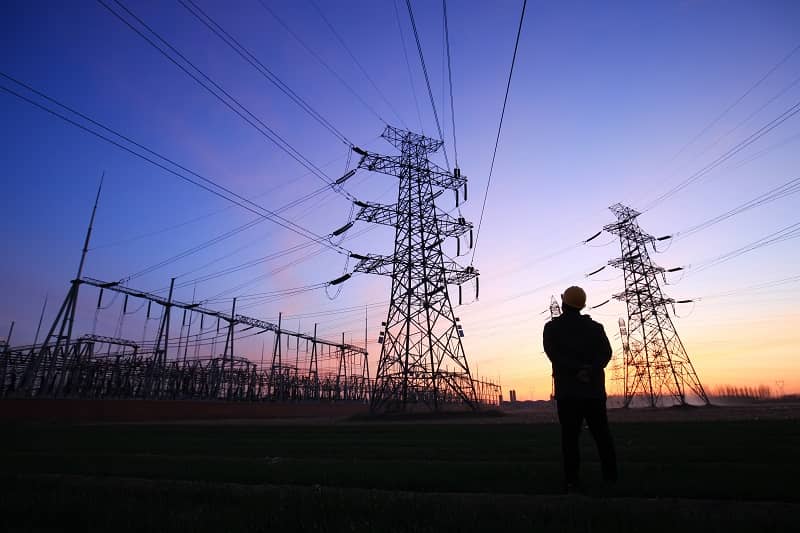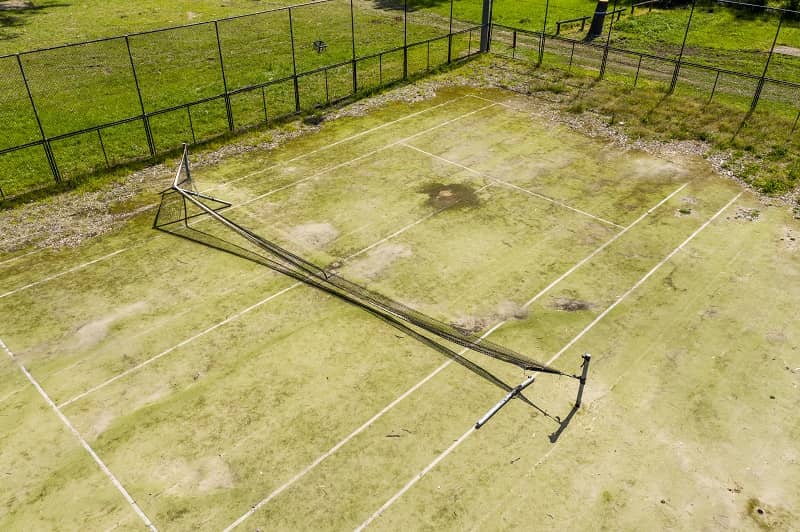By Rachel Dawson
Portland General Electric is living a virtual power plant pipe dream, and ratepayers need it to come back to reality.
PGE recently told regulators that “it is estimated that as much as 25% of flexibility could come from customers and distributed energy resources (DERs)” on the hottest and coldest days by 2030, from sources including solar, batteries, and electric vehicles (EVs). However, this kind of plan hinges on customers having power to give back to the grid during peak events when they likely need it themselves. This was made clear at a recent conference by Ahmad Faruqui, Ph.D., who works as an energy economist at the Battle Group in California.
A distributed energy resource (DER) is a small energy generation or storage technology, often existing near the point of use rather than a distant large power plant. DERs include rooftop solar arrays, battery storage, or EVs plugged into the electric grid. Customers who own a solar installation or battery can export electricity back to the grid for a credit on their bill if they produce more power than their home consumes.
DER is an umbrella term that also encompasses programs or technology that affect consumer demand for electricity, like demand response and energy efficiency. Demand response (DR) programs aim to motivate customers to reduce their normal energy use in response to a price change or by a utility request.
Utilities want to integrate EVs onto the grid by controlling the timing of EV charging, pushing charging times later in the evening after the daily afternoon peak. Grid operators also see a future possibility of using EVs as large batteries connected to the grid. They envision EV batteries storing energy when resources have produced too much electricity, or they could supply the grid when supply dips. However, PGE admits that further study is needed to understand the viability and reliability of two-way EV charging and dispatch.
But relying on scattered ratepayer-owned assets during a time of dire and immediate need for power is a risky move. While this technology is great when powered up and on hand, its availability can’t be ensured.
Dr. Faruqui explained why relying on a significant amount of DERs may not be the best utility solution for an emergency or peak event.
During the winter it’s common for the weather to be cloudy for days with little to no wind throughout the Columbia River Gorge. For example, on January 5, 2009, wind in the Gorge suddenly dropped and didn’t resume for three weeks. Power generation at all 25 wind farms came to a halt.
Imagine on a cold night, Oregonians return home from work and crank up their heat, turn on their television, and begin making dinner. Energy consumption reaches near peak levels without the availability of solar or wind resources. Ratepayers’ rooftop solar arrays fail to produce power, and their small batteries have been drained. There is nothing available for utilities to take advantage of. If the utility failed to acquire sufficient baseload resources for peak demand, then emergency measures (which may include blackouts) will have to be taken.
Faruqui lives in California and owns a solar array. He explained that during critical times, there is often nothing to give back to the grid after using his battery for himself. During a recent California blackout, smoke from wildfires affected solar output and the wind stopped blowing. There were very few demand response programs that could match the need. Customers couldn’t lower the load enough and experienced blackouts. On these critical days, a DER owner would have a deficit for the same reason the whole grid has a deficit.
PGE should be careful with how reliant it becomes on demand response programs. PGE offers a Peak Time Rebate that will earn customers $1 for every kilowatt hour they reduce their energy consumption below their baseline during a peak event so that demand does not outweigh supply. This type of program is popular in California. However, it’s becoming less useful the more often it’s used. According to Dr. Faruqui, the more frequently customers are asked to reduce their load, the less likely they are to do it. This should be a strong warning for Oregon utilities and should warrant further study.
Finally, PGE included electric vehicles in its list of DERs that could make up around 25% of power needed on the hottest or coldest days of the year. The same article cites Oregon’s EV standard and says that “there are 35,000 electric vehicles on Oregon roads today, while the state has set a goal to reach more than 1 million by 2030.” PGE needs to consider actual EV adoption rather than planning EV integration based on Oregon’s EV policy goals. The state missed the 2020 goal by around 15,000 cars, and state agencies have predicted the 2025 or 2030 goals won’t be met, either.
PGE should continue studying and paying attention to increased DER deployment, but it would be a mistake to assume 25% of customers’ power during a peak event on the coldest winter night will be met by resources and programs whose availability cannot be ensured. PGE should commit to acquiring firm power resources to meet anticipated demand during a peak event. These resources can include nuclear power, natural gas with carbon capture technology, renewable natural gas, geothermal, or additional hydropower. Dr. Faruqui believes the idea of a virtual power plant—the notion that customers have solar and storage resources that utilities can tap into on critical days—deserves attention and further analysis. But “right now,” he said, “it’s more virtual reality than actual reality.”
Rachel Dawson is a Policy Analyst at Cascade Policy Institute, Oregon’s free market public policy research organization.













Bob Elvis Clark
esThe other factor is that if you’re talking a snow and ice cold weather event, the roof top solar doesn’t generate any power even during the day. Furthermore, there can be downed distribution lines making it a joke to depend on distributed home based energy. If you do go electric vehicle, make sure it is a hybrid so you can have fuel to give you a way of charging the battery back up. This is like a wrong way headed train which is leaving the station, and our leaders are celebrating before the eventual catastrophic collision. It use to be the utility industry and its regulators are run by engineers; but now days they are really run by liberal arts majors and environmental ideologues. Best things to do is get a wood stove and a stock up on firewood; a portable backup generator; and a natural gas insert with backup battery.
John Trueb
It is difficult to understand the obvious…Nuclear power generation is the answer as to where electric power should be generated.
That seems like the only answer to peak load requirements.
Sadly, it will take time to develop nuclear generation systems…unless the process of designing and building the nuclear plants is not streamlined and simplified.
Elice
In Texas in Feb, when they got snow and very cold temperatures the grid failed the people completely, windmills failed by 92%. People froze to death.
Here in Portland I know two people who have solar panels on their roofs. One across the street and she doesn’t know if she’s saving any money, but she doesn’t think she’s paying more. And the other house in NE Portland, he is removing the solar panels because not only is he not saving, he pays a set fee also to Solar House (Elon Musk) and tracked his usage and costs for two years, and he’s paying more with those solar panels.
So get real. I am so sick of hearing these pie in the sky scenarios. Get real about just how much electricity it will take to charge all the electric cars we’re told to buy. Wind and solar are not going to even come close to handling that additional load. I just sick of the BS that is shoveled and the facts that are ignored.
And BTW, the “the last six months for Antarctica are the coldest on record.
“for the polar darkness period, from April through September, the average temperature was -60.9 degrees Celsius (-77.6 degrees Fahrenheit), a record for those months.”
“In the winter of 2021, the continent of Antarctica experienced its second coldest winter and recorded temperatures in the months of “June, July, and August, [at] 3.4 degrees Celsius (6.1 degrees Fahrenheit) lower than the 1981 to 2010 average at -62.9 degrees Celsius (-81.2 degrees Fahrenheit),” according to the new NSIDC report.
Patrick Moore Greenpeace co-founder said “Polar bears would not exist today without climate change, and they may even be thriving because of current climate trends. That’s what the co-founder of Greenpeace told scientists, economists, and academics who took part in an international conference challenging alarmist claims about global warming.” Washington Examiner Oct 26, 2021
And Jan 07, 2021; Posted Jan 07, 2021
SunPower said Thursday it will close the former SolarWorld factory in Hillsboro, eliminating 170 jobs
First there was Solar World, who Oregon leaders gave $100 million of our tax dollar to subsidize, and it went bankrupt in 2017, then SunPower, based in Silicon Valley took it over in 2018 but never made one solar panel ‘but, amid shifting dynamics in the highly competitive solar industry, began scaling back its aspirations almost immediately.
And remember one of Obama admin failures was Solyndra, $535 million of taxpayers dollars just flushed for another pie-in-the-sky scheme. Taxpayers getting hammered. And now they want TRILLIONS MORE to make all the same pie-in-the-sky mistakes again and again. It’s sickening.
So this statement is true “the notion that customers have solar and storage resources that utilities can tap into on critical days…..it’s more virtual reality than actual reality.” We have stupid people running Oregon (into the ground) and making everything worse every day. We have horrible leadership. They throw around soundbites of green this and green that but refuse to back up their big spending plans with results. All of these ventures go bankrupt. And they do not care about the people at all. They are feckless and reckless. Taxpayers get hammered and the same insiders, feeding at the government trough (taxpayers) get very wealthy.
hydrostan
Well -It really doesn’t matter how many Windmills, Solar panels, or any form of distributed GENERATION we use to send power TO the grid -if we can’t take it OFF! -if the grid wires and transformers cannot take the extra load current. THAT IS WHERE WE NEED TO BE SPENDING OUR MONEY AND ENGINEERING TALENTS!! because the safety breakers will drop out and we will get continuing BLACKOUTS and FIRES –Science says the HEAT (Watts) in the transformers and wires will QUADRUPLE and overheat! if we only double the load on the grid which is very easy to do –Jus imagine if we triple the current, the grid will get 9 times hotter!! –PGE obviously know this and somehow they are blindfolding this issue from the public -because it is a BIG POLITICAL NEGATIVE to electrifying trucks and cars. -Please don’t misinterpret my statements because I am in favor of cleaning up our means of transport but we MUST BE SENSIBLE doing it!!! Although personally, I would like to see natural gas-derived Hydrogen -piston engine or fuel cell electric vehicles take the load away from the grid -Respectfully -HYDROSTAN! –NOTE -Just take even one-fifth of the BTU energy from gasoline we use for trucks and cars and transfer it to the grid -you will find the grid will collapse!!! with the extra current load hence many BLACKOUTS) Naysayers to this are welcome!